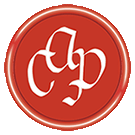Speaker
Prof.
Jean-François Bisson
(Université de Moncton)
Description
Ytterbium-doped yttrium oxide thin films were obtained with a variant of pulsed laser deposition, called reactive crossed-beam laser deposition, wherein a cross-flow of oxygen, synchronized with the laser pulses, is used for oxidizing and entraining the ablation products of a Yb/Y alloy target towards a substrate placed inside a vacuum chamber [1]. The nanostructure of the films is examined using X-ray and electron diffraction, as well as Scanning Transmission Electron Microscopy (STEM). As-produced coatings are amorphous and become nanocrystalline cubic yttria after annealing. STEM images taken in the Bright-Field and in the High-Angle Annular Dark-Field modes reveal complementary aspects of the nanostructure of yttria, namely the presence of oxygen vacancies as well as distortion of the cationic lattice respectively. These peculiarities of the crystalline structure play an important role in the luminescence properties of the Yb3+ ions, since they lower the crystal-field symmetry of the Yb3+ substitution site, which directly affect the luminescence spectra. Thin films made of luminescent materials are attractive for many applications such as coherent miniature optical sources [2], optical converter from the infrared to the visible range for in-vivo imaging [3], to name a few.
Des revêtements d’oxyde d’ytterbium et d’yttrium (YbxY1-x)2O3 nanostructurés ont été déposés à l’aide d’une variante de l’ablation laser, pour laquelle le transport et l’oxydation des produits d’ablation d’une cible métallique vers le substrat se font à l’aide de courtes bouffées d’oxygène synchronisées avec le laser [1]. La nanostructure et les propriétés de luminescence de nos revêtements ont été étudiées par diffraction aux rayons X et diffraction électronique ainsi que par microscopie électronique à transmission. Les dépôts obtenus sont amorphes et deviennent nanocristallins après recuit. Pour la première fois à notre connaissance, nous avons mis en évidence, en tirant profit de la complémentarité des images obtenues par microscopie électronique à transmission en champ sombre et en champ clair, la présence de lacunes d’oxygènes et la distorsion du réseau cationique. Ces deux particularités jouent un rôle important dans les propriétés de luminescence des ions d’Yb3+ puisqu’elles permettent l’apparition de sites de substitution à faible symétrie, augmentant ainsi la probabilité de relaxation radiative de l’ion excité. La capacité de contrôler la taille des nanocristaux par un recuit permet de contrôler la forme du spectre de luminescence. Les matériaux luminescents déposés sous forme de couches minces sont très attrayants pour plusieurs applications comme les sources lumineuses cohérentes miniaturisées [2], la conversion dans domaine du visible pour l’imagerie ou la détection in-vivo [3], etc.
References :
[1] J.-F Bisson, G. Patriarche, T. Marest, J. Thibodeau, (2015) Nanostructure and luminescence properties of amorphous and crystalline ytterbium-yttrium oxide thin films obtained with pulsed reactive crossed-beam deposition, J. Mater. Sci., 50(3), 1267-1276
[2] I C Robin, R Kumaran, S Penson, S E Webster, T Tiedje and A Oleinik (2008) Structure and photoluminescence of Nd:Y2O3 grown by molecular beam epitaxy. Opt. Mat. 30: 835-838
[3] G S Yi, G M Chow, Synthesis of hexagonal-phase NaYF4 : Yb,Er and NaYF4 : Yb,Tm nanocrystals with efficient up-conversion fluorescence (2006) Adv. Funct. Mater. 16(18), 2324-2329
Author
Prof.
Jean-François Bisson
(Université de Moncton)
Co-author
Dr
Gilles Patriarche
(Laboratoire de photonique et nanostructures, CNRS)

